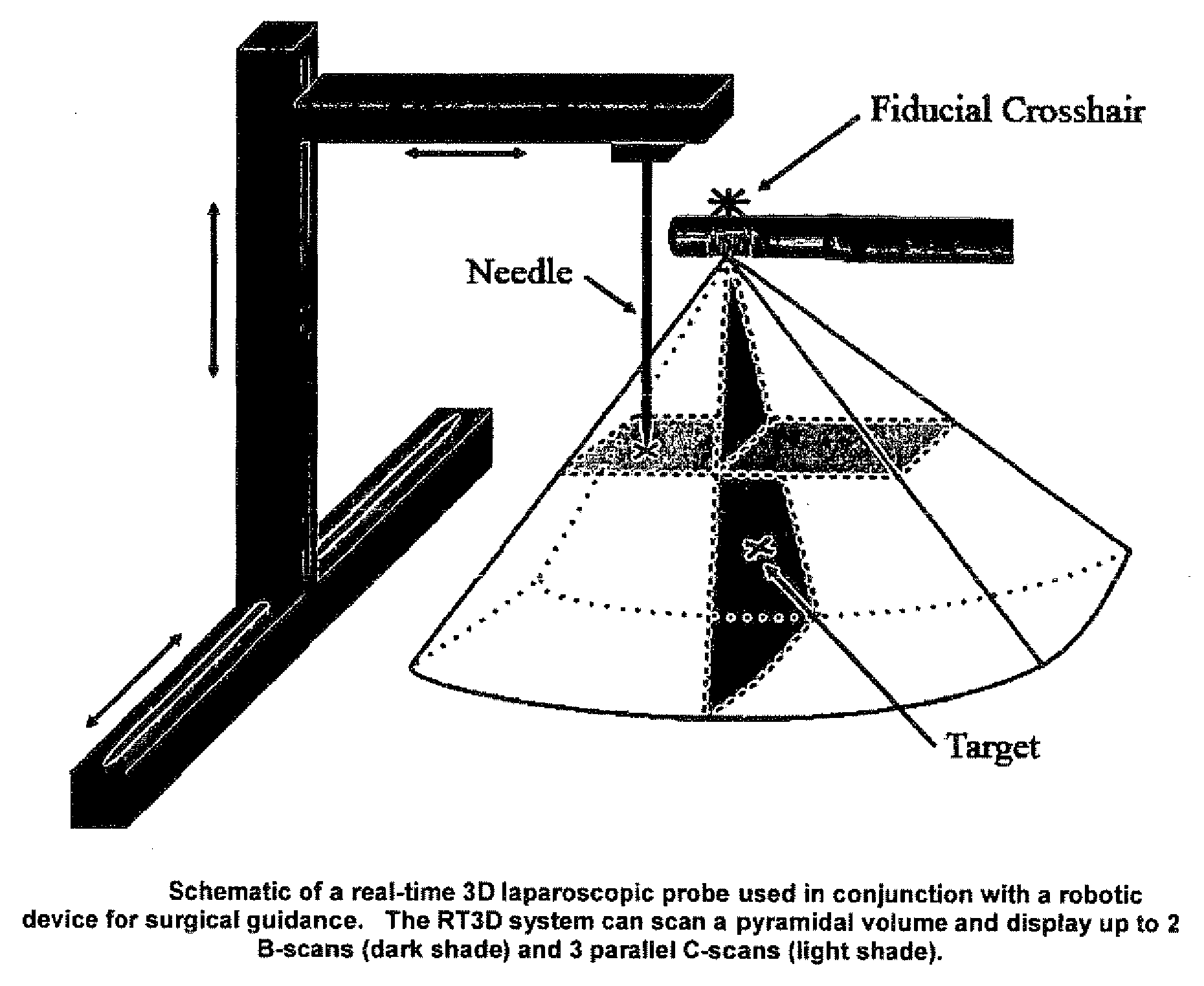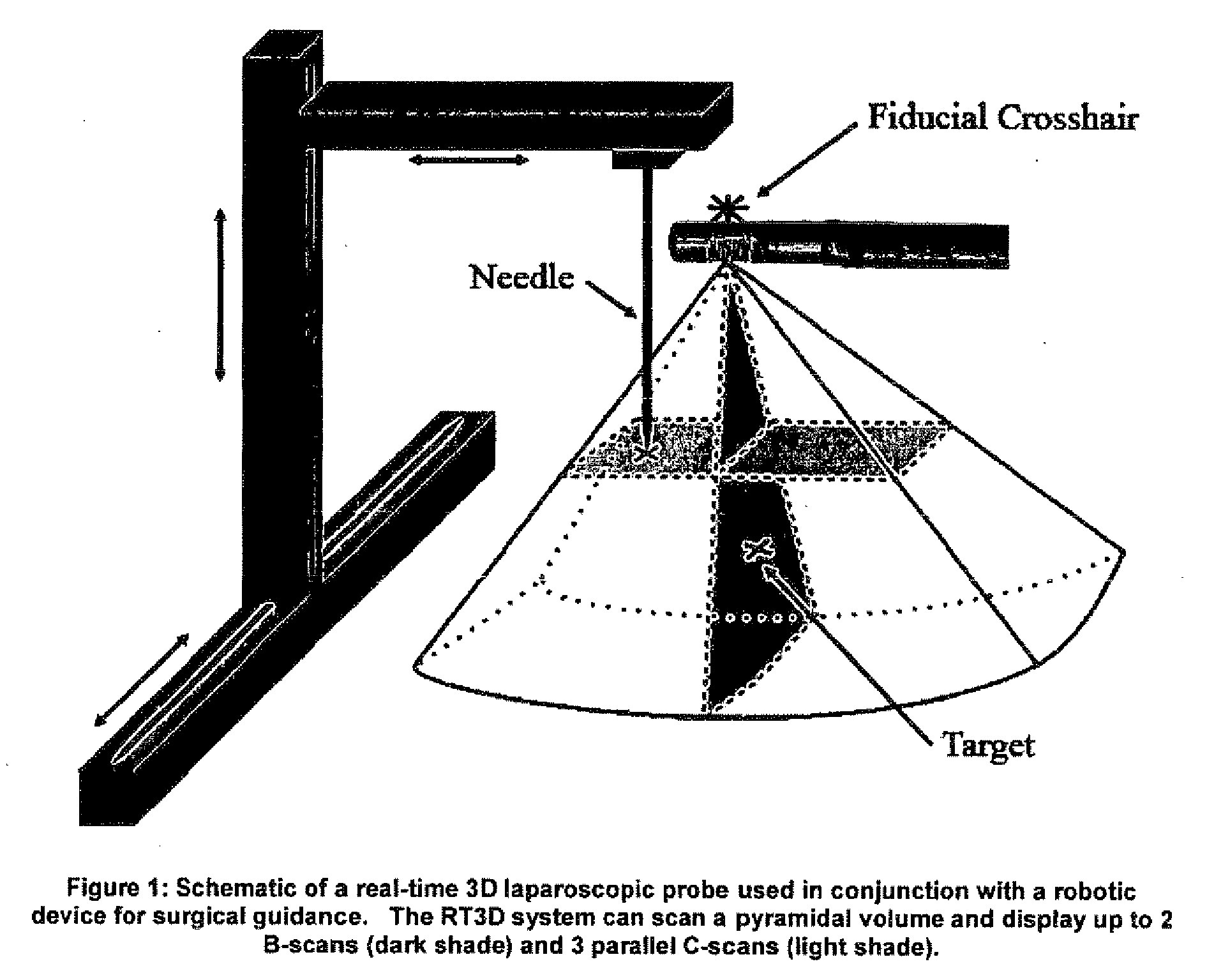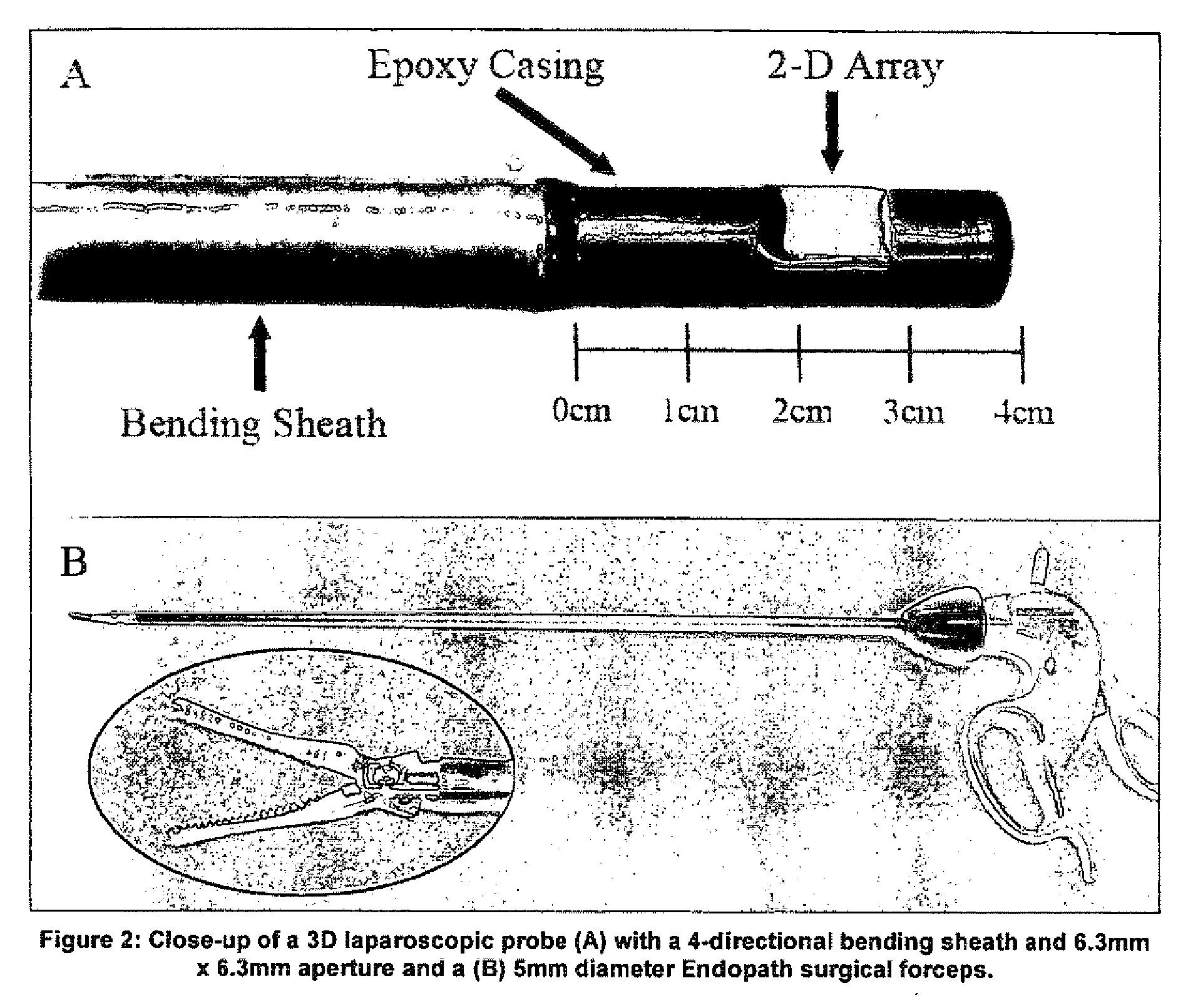Real-time 3-d ultrasound guidance of surgical robotics
a robotics and real-time technology, applied in the field of real-time 3d ultrasound, can solve the problem that the laparoscopic grasper can generally only give a rudimentary feedback, and achieve the effects of improving ergonomics, increasing visibility and depth perception, and precise, dexterous control
- Summary
- Abstract
- Description
- Claims
- Application Information
AI Technical Summary
Benefits of technology
Problems solved by technology
Method used
Image
Examples
example
Animal Model and 3D Laparoscopic Study
[0031]The Institutional Animal Care and Use Committee approved the use of a canine model for the acquisition of in vivo 3D images, conforming to the Research Animal Use Guidelines of the American Heart Association. Ketamine hydrochloride 10-15 mg / kg IM was used to sedate the dog. An IV of 0.9% sodium chloride was established in the peripheral vein and maintained at 5 mL / kg / min. Anesthesia was induced via nasal inhalation of isoflurane gas 1-5%. An endotracheal tube for artificial respiration was inserted after oral intubation with the dog placed on its back on a water-heated thermal pad. A femoral arterial line was placed on the left side via a percutaneous puncture. Electrolyte and respirator adjustments were made based on serial electrolyte and arterial blood gas measurements. Blood pressure, electrocardiogram, and temperature were continuously monitored throughout the procedure.
[0032]After the animal preparations were complete, the dog's abdo...
PUM
 Login to View More
Login to View More Abstract
Description
Claims
Application Information
 Login to View More
Login to View More - R&D
- Intellectual Property
- Life Sciences
- Materials
- Tech Scout
- Unparalleled Data Quality
- Higher Quality Content
- 60% Fewer Hallucinations
Browse by: Latest US Patents, China's latest patents, Technical Efficacy Thesaurus, Application Domain, Technology Topic, Popular Technical Reports.
© 2025 PatSnap. All rights reserved.Legal|Privacy policy|Modern Slavery Act Transparency Statement|Sitemap|About US| Contact US: help@patsnap.com



